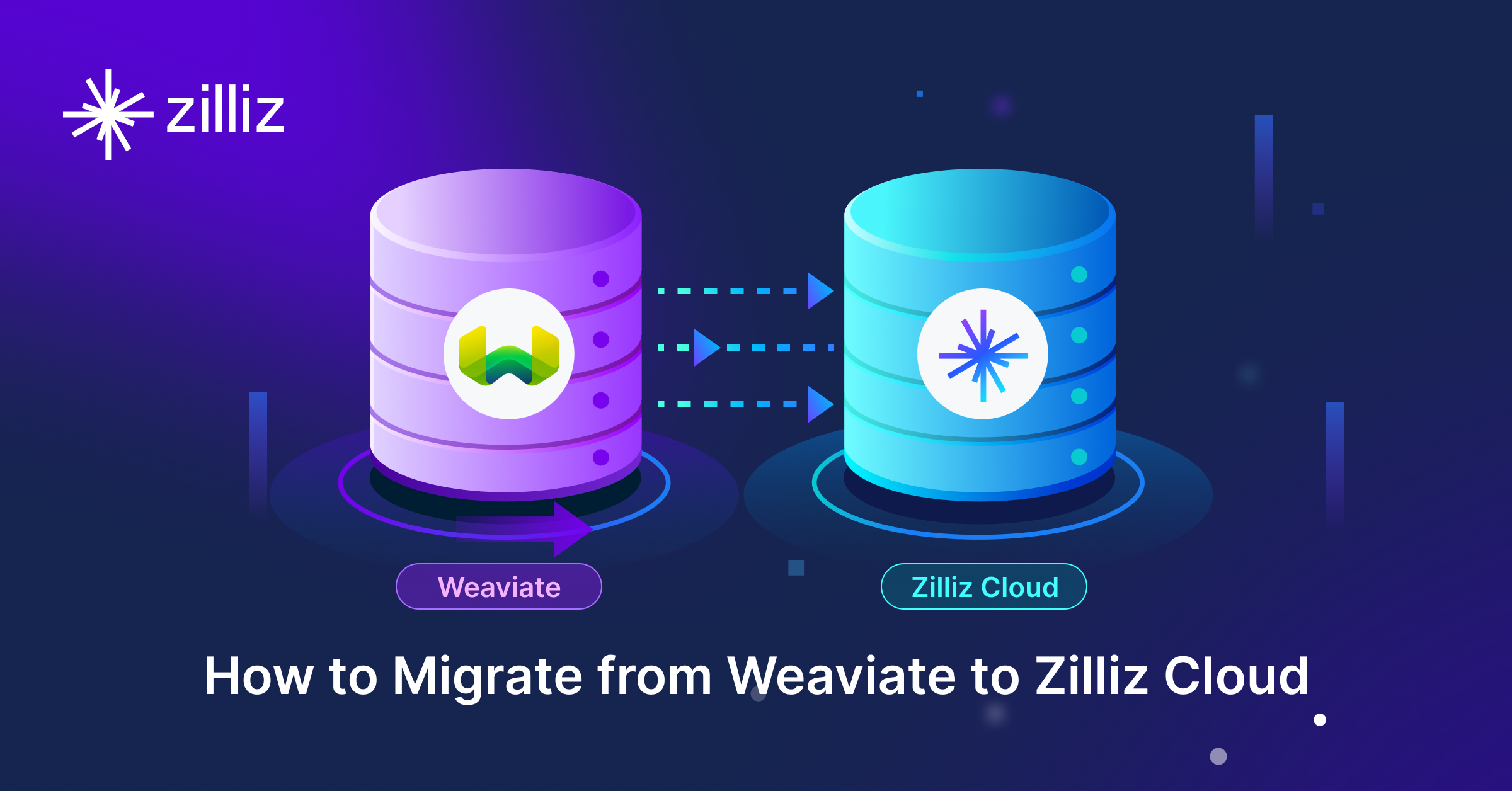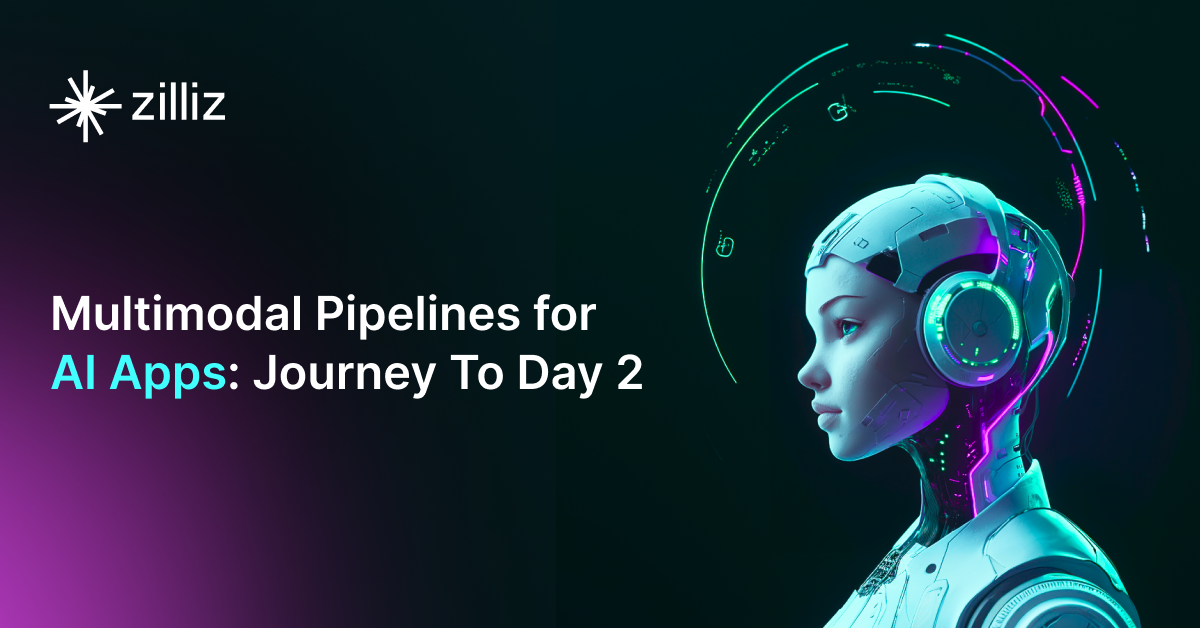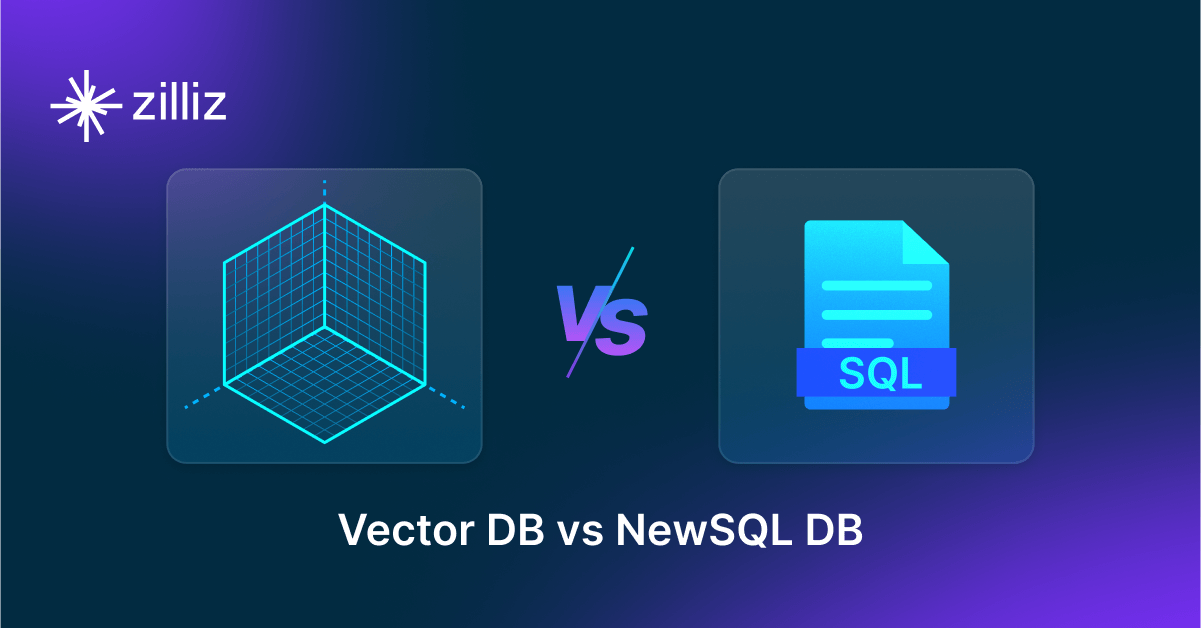The Next Stop for Vector Databases: 8 Predictions for 2023

2022 marked a significant year for vector databases. Notably, the Milvus community released the cloud-native vector database Milvus 2.0. More than ten open-source vector database products, such as Vald, Weaviate, Qdrant, Vespa, Vearch, AquilaDB, and Marqo, emerged on GitHub. Database manufacturers like Elastic and Redis joined the fray, introducing vector retrieval capabilities. On the cloud front, Zilliz, the team behind the Milvus community, launched a fully-managed DBaaS service, Zilliz Cloud, competing with companies like Pinecone and Google Vertex AI.
The capital market was equally vibrant, with several vector database companies securing significant funding, setting the stage for further growth. This influx of capital and interest in vector databases in 2022 paves the way for my predictions for 2023, a year I expect to witness this emergent technology's continued development and maturation.
| Company | Raised | Date |
|---|---|---|
| Zilliz | $60M (B+ Round) | Aug 2022 |
| Pinecone | $28M (A Round) | Mar 2022 |
| Weaviate | $16M (A Round) | Feb 2022 |
| Qdrant | €2M (Pre-Seed Round) | Jan 2022 |
Vector Database Companies' 2022 Funding Situations
2023 Predictions for Vector Databases
Prediction #1: Differentiation and Specialization in Vector Databases
In 2023, vector databases will evolve distinctively due to the influx of capital and rapid development of use cases, leading to differentiation and specialization:
Online Serving Versus Offline Processing: Traditional vector databases, designed for high online real-time demands with more minor data scales, will now adapt to handle massive datasets from areas like image processing and NLP, necessitating enhanced batch processing and offline capabilities.
Logical Instances Versus Physical Instances: The sector will see a split between logical instances, focusing on ease of use and simple deployments, and physical instances like Milvus, which offer flexible storage and efficient retrieval solutions. This divergence caters to varying needs, from simple vector processing to complex vector generation.
Standalone Versus Distributed Cloud-Native Systems: The choice between standalone and distributed cloud-native systems will be crucial. While standalone systems offer stability, distributed cloud-native designs like Milvus 2.0 are poised for scalability and cloud-based efficiencies.
Different Indexing Implementations: The indexing methodologies are diversifying. With new developments like Google's ScaNN technology, vector databases are evolving in performance and functionality, tailoring to specific use cases and efficiency requirements.
These trends indicate a move towards more tailored and specialized vector databases, aligning with the specific needs of diverse applications and data scales.
Prediction #2: Move Toward a Unified Query Interface
Currently, vector databases lack a unified query interface, predominantly using custom Python SDKs or Restful APIs. However, developments like Big Query's BigLake at Google Next 2022, which advances SQL as a primary language for unstructured data and vector processing, hint at a significant shift. Despite SQL's traditional user base differing from deep learning developers and its mixed success in machine learning, its potential as a query language for vector databases warrants attention.
Beyond SQL, there are experiments with GraphQL-based query languages and custom DSLs. Regardless of which interface gains wider acceptance, the prediction for 2023 is the emergence of a de facto standard interface in the vector database domain, with multiple products adopting a similar approach for implementation.
Prediction #3: Further Integration of Vector Databases with Traditional Databases
Vector databases have evolved considerably over the past two years, moving beyond their initial phase as simple wrappers around FAISS. They now routinely feature capabilities for filtering and indexing scalar fields and managing CRUD operations on streaming data, integrating elements like parsers, optimizers, memory, and concurrency management from traditional databases. Many OLAP and NoSQL databases incorporate vector retrieval capabilities, becoming significant players in this field.
Despite the belief that "one size does not fit all," with traditional databases struggling in vector retrieval due to human and architectural limitations, 2023 will likely see more traditional database manufacturers entering the vector retrieval space, attracted by its potential. Vector databases, on the other hand, are increasingly learning from traditional database realms, transitioning their core from AI infrastructure to more database-oriented functionalities. This shift is driven by the need for more general-purpose and stable vector retrieval solutions. Consequently, we expect to see an influx of talent with traditional database backgrounds (including transaction processing, application processing, search, and caching) into the vector database sector in 2023.
Prediction #4: Significant Cost Reduction in Vector Databases
In 2023, vector databases are predicted to experience a cost reduction of 3-5 times. This change is crucial as cost and performance have been significant barriers to vector retrieval surpassing traditional keyword search. Currently, most vector databases rely solely on memory. To store vector data in the range of tens of billions, they need memory capacity in the order of tens of terabytes.
Several factors are contributing to this cost reduction:
Widespread Use of ARM Architecture in the Cloud: ARM's simple computational performance offers 2-3 times better cost-efficiency than X86.
Growth of Heterogeneous Hardware: These systems surpass GPUs' memory/storage and bandwidth capabilities.
Advancements in Quantization Techniques: Especially applying 4-bit quantization in vector retrieval.
Focus on Disk Anns Indexes Research: Emerging as a mainstream research direction.
NVMe Disk Performance: Utilizing technologies like AIO and IO_URING, achieving million-level IOPs.
Deeper Understanding of Vector Databases: Leveraging metadata and pruning techniques similar to traditional databases, reducing the need to query all shards each time.
Machine Learning-Based Index and Model Parameter Selection: This approach will be implemented in production for the first time.
Vector Data Temperature Characteristics: Like traditional scalar data, vector data exhibits hot and cold characteristics.
These developments indicate a promising year for vector databases, making them more cost-effective and efficient.
Prediction #5: Emergence of the First Serverless Vector Database
In 2023, we anticipate the introduction of the first serverless vector database. Serverless architecture offers flexibility and on-demand billing, particularly appealing for cloud-hosted vector database services. This technology suits the complex nature of vector retrievals, which include offline and online processes and often face fluctuating loads in multi-tenant environments. Serverless simplifies capacity assessment and business isolation for users.
While serverless vector databases are still evolving and have a way to go before reaching maturity, there's potential for initial developments similar to AWS Aurora's container-based, dynamically scalable standalone systems. However, the full realization of a truly distributed serverless vector database might still be some ways away.
Prediction #6: Rise of Open-Source Tools for Vector Databases
In 2023, we can expect to see the rise of open-source tools tailored for vector databases. The unique characteristics of vector data call for the creation of innovative tools that go beyond traditional data representation methods. These tools will provide more intuitive and visual ways to display vector data, including its distribution and query pathways.
The development of data transfer tools will also be a key focus. These tools will enhance data backup, migration, and import capabilities, addressing the growing diversity of vector databases. They will play a crucial role in linking different data types and managing the flow of large-scale vector data generated from platforms like Spark, PyTorch, and TensorFlow, facilitating seamless integration across various clouds and data centers.
Prediction #7: Early Adoption of AI for Database (AI4DB) in Vector Databases
In 2023, vector databases will lead the way to a practical implementation of AI for Database (AI4DB) technologies. While AI4DB has been a concept in the database field for many years, its widespread adoption has been challenging. The main obstacle has been relational databases' high accuracy and explainability demands, where even a tiny percentage of inaccuracies can hinder AI applications in real-world use cases.
Vector databases, however, inherently operate on probabilistic optimization, focusing more on recall rates than absolute accuracy. This characteristic allows for a more aggressive application of AI4DB, such as automatic adjustment of parameters, query statement rewriting, and the use of learned indexes. Tests have shown that using model predictions for query parameters can more than double performance in large datasets. Optimizing indexes and query parameters based on datasets and a small set of queries is likely to yield even more significant improvements.
Prediction #8: Second Commercial Company Emerging from Open-Source Milvus
In 2023, we can expect to see the launch of new commercial ventures that leverage the open-source Milvus vector database. Milvus is one of the leading and most advanced cloud-native vector databases globally. Like successful open-source projects like Hadoop, Presto, and Clickhouse, Milvus will inspire commercial entities to contribute to and build upon its foundation. While starting a vector database project from scratch becomes increasingly challenging, the potential for developing SaaS (Software as a Service) based on vector databases like Milvus remains significant. This trend will likely continue with more contributors joining the open-source community, collaborating on the Milvus project, and exploring commercial opportunities.
Closing Thoughts
Recent years have seen a significant expansion in vector database capabilities and use cases, greatly aided by advancements in computational power, including GPUs and specialized hardware. Looking ahead to 2023, it is shaping to be a highly anticipated year for the industry and the open-source community. It promises to be a time of continued innovation, growth, and collaboration.
This series of predictions, albeit brief, aims to provide a glimpse into the future of vector databases, highlighting the exciting developments and opportunities on the horizon. As we move forward into 2023, the prospects for this field are promising and indicative of technology's dynamic and evolving nature. Let's look forward to what the next year brings us in vector databases. See you in 2023!
Start Free, Scale Easily
Try the fully-managed vector database built for your GenAI applications.
Try Zilliz Cloud for FreeKeep Reading

Why Teams Are Migrating from Weaviate to Zilliz Cloud — and How to Do It Seamlessly
Explore how Milvus scales for large datasets and complex queries with advanced features, and discover how to migrate from Weaviate to Zilliz Cloud.

Multimodal Pipelines for AI Applications
Learn how to build scalable multimodal AI pipelines using Datavolo and Milvus. Discover best practices for handling unstructured data and implementing RAG systems.

Vector Databases vs. NewSQL Databases
Use a vector database for AI-powered similarity search; use a NewSQL database for scalable transactional workloads requiring strong consistency and relational capabilities.
